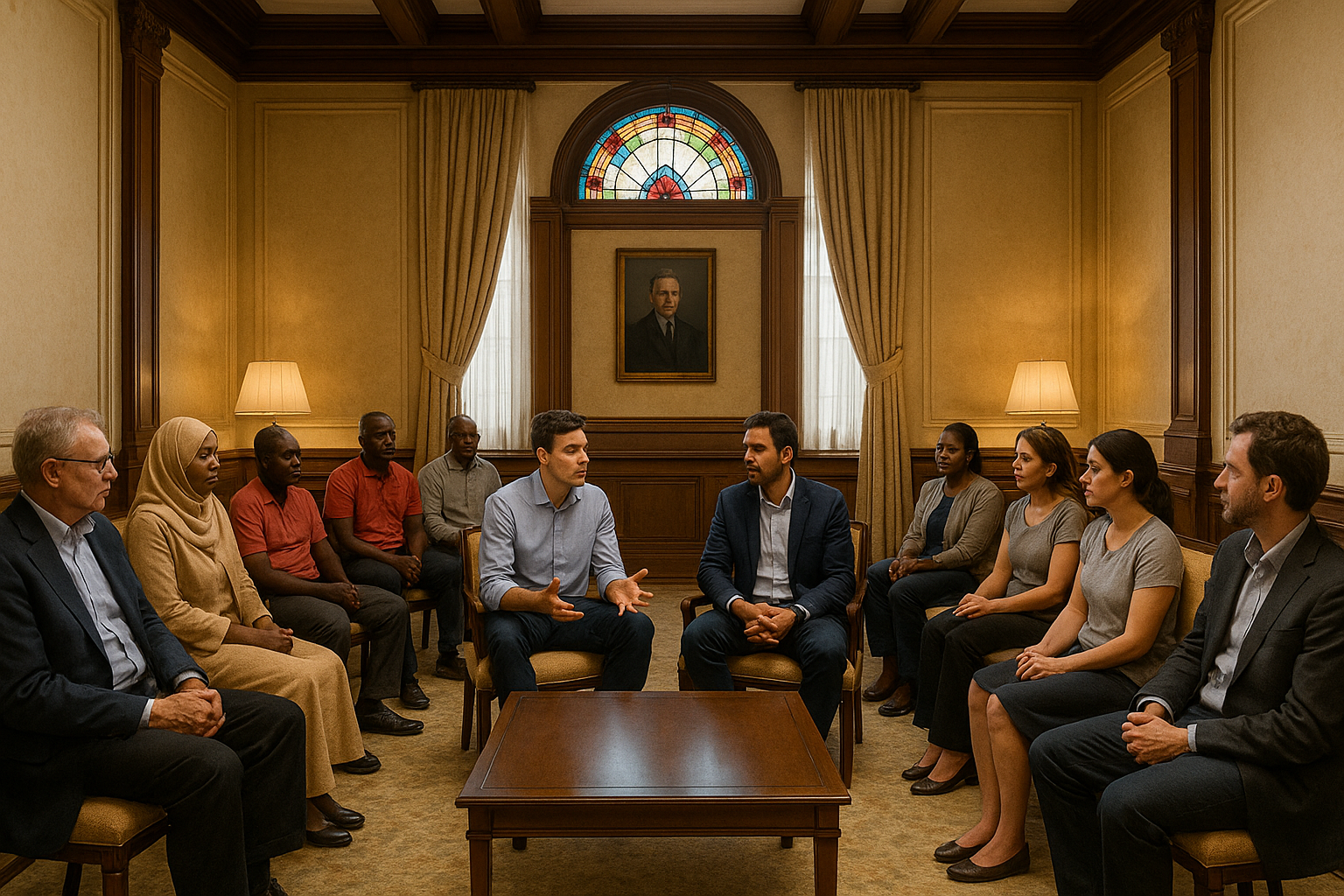Sustaining Peace: Embedding Dialogue and Trust in Governance Beyond Crisis Response
The UNDP–Berghof Foundation report “Embedding Peace” highlights how sustainable peace requires weaving dialogue, justice, and inclusion into everyday governance rather than treating it as a stand-alone project. Drawing on field experiences and lessons learned, it positions peace as a generational public good that demands patience, local ownership, and political courage.

The collaboration between the United Nations Development Programme (UNDP) and the Berghof Foundation is presented in the report “Embedding Peace” as both a reflection and a forward-looking vision of peacebuilding in a world where conflict has become more complex, protracted, and unpredictable. The two institutions, one a global development agency with extensive presence in fragile states and the other a research-driven organization with specialized expertise in dialogue and mediation, embarked on a joint effort to rethink how peace can be sustained. The central idea running through the report is that peace cannot be treated as a temporary fix or a stand-alone initiative. Still, it must instead be embedded into the governance structures, social fabric, and political processes of societies if it is to endure. This perspective, emerging from years of shared experimentation, grounds the narrative in both practical lessons and aspirational goals, while firmly rooting the account in the strengths that each institution brought to the table.
Navigating a Shifting Global Landscape
The report situates this collaboration within a backdrop of evolving conflict dynamics. Today’s wars rarely resemble the traditional interstate confrontations of the past. Instead, they are characterized by fragile governance, entrenched inequalities, identity divisions, and regional spillovers that prolong instability. Traditional peacebuilding interventions, often reactive and confined to post-conflict recovery, have proved insufficient in preventing relapses into violence. Recognizing these shortcomings, UNDP and Berghof set out to test a different approach: one that builds systemic resilience before crises take root and that sustains dialogue throughout political transitions. UNDP’s wide mandate and field presence opened doors to governments, while Berghof’s expertise in mediation and transformative conflict work offered depth and credibility with grassroots actors. Together, they forged an experimental partnership aimed at bridging the gap between formal institutions and community-driven peace initiatives.
Building Infrastructures for Peace
At the heart of the report is the concept of “infrastructures for peace.” These are not simply official bodies or peace councils, but networks, practices, and trusted spaces that societies create to manage conflict nonviolently. Embedding peace, in this sense, means weaving these infrastructures into everyday governance, ensuring that dialogue and mediation become standard features of political life rather than emergency measures. The collaboration focused on nurturing legitimacy by making processes inclusive and transparent, so that citizens felt ownership over outcomes. Peace infrastructures also emphasized connections, linking local mediators with national policymakers, bridging community divides with government institutions, and ensuring women, youth, and marginalized groups had seats at the table. The report stresses that these infrastructures must grow organically within societies; they cannot be imported wholesale or imposed from outside.
Lessons from the Field
The report brings these ideas to life through field experiences that highlight both promise and setbacks. In some countries, community peace committees successfully mediated disputes before they escalated into violence, while in others, national dialogues allowed diverse groups to reimagine political settlements. Visual infographics in the report, such as those on pages eight and fifteen, illustrate the multiple layers of engagement, from grassroots dialogues to national-level frameworks, showing how sustainable peace requires anchoring at several levels simultaneously. Yet, the report is candid about the difficulties. Some processes were undermined by political elites who had no interest in compromise; others faltered when international funding cycles clashed with the slow, unpredictable nature of dialogue. Far from glossing over these obstacles, the UNDP–Berghof partnership treated them as opportunities for learning. Flexibility and adaptation became central to the approach, underscoring that peacebuilding is less about implementing rigid plans and more about responding to shifting realities on the ground.
Toward a Generational Vision of Peace
The narrative draws several broader insights that resonate beyond individual case studies. First, peace is inherently political; no technical solution can succeed without addressing power dynamics and entrenched exclusion. Second, local ownership is paramount; solutions only endure when communities feel they belong to them. Third, trust and legitimacy are fragile yet indispensable, not only between citizens and states but also among international partners themselves. Above all, embedding peace requires patience. Development projects are often bound to short funding cycles, but systemic change in governance and social relations must be measured in decades. The report’s closing sections are aspirational, framing peace as a public good that deserves investment on par with education or health. The UNDP–Berghof partnership is cast as a prototype, an example of how institutions with different strengths can craft innovative, context-sensitive approaches to sustaining peace. To embed peace, the report concludes, is to weave dialogue, justice, and participation into the very DNA of governance, making them inseparable from how societies organize themselves and envision their futures.
- FIRST PUBLISHED IN:
- Devdiscourse










